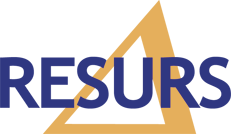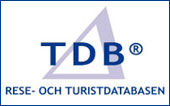Lådan & Co AB, www.ladan.se
TDB method and description
TDB
Rese- och TuristDataBasen (The Swedish Travel and Tourism Data Base)
TDB is carried out by Marknadsfakta Åre AB and is a national travel survey that measures the travelhabits of Swedish residents. The TDB contains data from 1989 built on more than 300,000 interviews. Extrapolated to the total population of Sweden, the material represents more than 1 billion trips. One of Europe's most comprehensive travel surveys. Through the continuity of the survey and the large number of interviews, changes in travel patterns may be analysed over time as well as over space (location).
The survey mapps the travelling of the Swedes (0-74 years):
- for leisure and business
- in Sweden and abroad
- overnight as well as day-only
That gives us eight types of travel.
For each trip we also examine:
- means of transport
- type of accommodation
- expenditures
- purpose of trip
- etc.
Furthermore the TDB contains data on the respondents socio-economical background.
Method
Every year we carry out 24,000 telephone interviews, at a rate of 2,000 per month. The survey includes all Swedes between the ages of 0 and 74 years, who have access to a telephone. This means that we reach 99% of the target population (8 million). First, we stratify the selection county-wise. Then an automatic system makes a randomized selection and manages calling (Random Digit Dialling). Eight (8) tries, on different days and different hours, will be done to get in contact with the selected household. To get a respondent in the target household we are doing another randomized selection, based on sex and age.
The CATI system: During the interview, the interviewer directly registers the answer of the respondent and the answer is automatically coded and updated in the database. The system is flexible, and it is possible to add or remove questions.
For each type of travel (example: overnight leisuretrip in Sweden) we examine two trips. If the respondent have taken more than two trips, these so called "missing" trips are weighted according to the total number of trips.
After each wave of 2000 interviews the selection is weighted with regard to county, sex, age and size of household.


